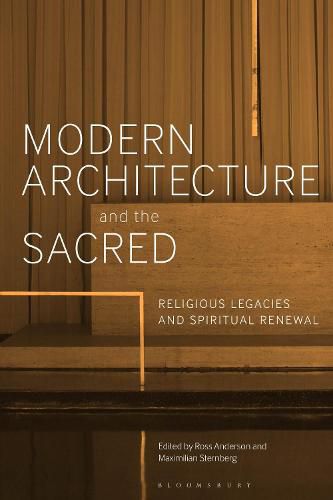Readings Newsletter
Become a Readings Member to make your shopping experience even easier.
Sign in or sign up for free!
You’re not far away from qualifying for FREE standard shipping within Australia
You’ve qualified for FREE standard shipping within Australia
The cart is loading…






Modern Architecture and the Sacred provides a timely reappraisal of the many ways in which architecture and the sacred have overlapped in the 20th century.
A wide range of case studies are presented through 16 contributed chapters - including the work of iconic modernist architects such as Le Corbusier, Alvar Aalto and Mies van der Rohe - which together demonstrate how sacred and semi-sacred buildings are central phenomena in modernism. Such works have much to reveal to us about the deeper motivations and complexities at the core of the modernist project. The case material is not limited simply to discussions of explicitly religious buildings (churches, synagogues, etc), but looks outwards to invocations of the ‘semi-sacred’ within secular buildings too - museums, exhibition pavilions, and memorials - which can all make claims at times to a form of sacred space. This expansion of the notion of sacred space sets this collection apart, providing a deeper insight into the role that spirituality plays in modern architecture’s philosophical foundations, whether explicitly religious or otherwise.
$9.00 standard shipping within Australia
FREE standard shipping within Australia for orders over $100.00
Express & International shipping calculated at checkout
Modern Architecture and the Sacred provides a timely reappraisal of the many ways in which architecture and the sacred have overlapped in the 20th century.
A wide range of case studies are presented through 16 contributed chapters - including the work of iconic modernist architects such as Le Corbusier, Alvar Aalto and Mies van der Rohe - which together demonstrate how sacred and semi-sacred buildings are central phenomena in modernism. Such works have much to reveal to us about the deeper motivations and complexities at the core of the modernist project. The case material is not limited simply to discussions of explicitly religious buildings (churches, synagogues, etc), but looks outwards to invocations of the ‘semi-sacred’ within secular buildings too - museums, exhibition pavilions, and memorials - which can all make claims at times to a form of sacred space. This expansion of the notion of sacred space sets this collection apart, providing a deeper insight into the role that spirituality plays in modern architecture’s philosophical foundations, whether explicitly religious or otherwise.